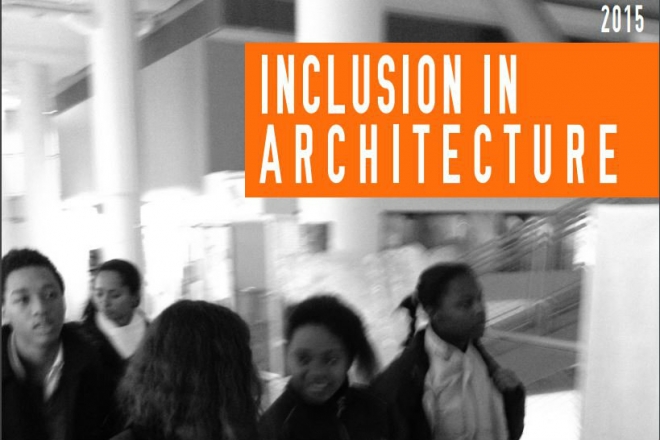The J. Max Bond Center recently published Inclusion in Architecture,one of the first comprehensive compilations of data recording the state of African Americans and Hispanics practicing in the architecture profession that also includes a look at K-12 architecture education, popular media and other feeders into the academy. That's right: architecture education doesn't have to start at grade 13!
1. As background, please tell us why the J Max Bond Center chose Inclusion in Architecture as a topic for an in-depth research and engagement initiative.
As an African American student told by his Harvard professors in 1955 that he would not find work as an architect in the US, Max Bond not only went on to lead two successful global design firms, but also dedicated himself to providing opportunities for people of color to enter and excel in the field of architecture. Therefore, the J. Max Bond Center believes it is essential to its mission to advance awareness, education and access to architecture. To do this effectively, it was critical to create a comprehensive understanding of how African American and Hispanic professionals, students and educators were participating in the field, and more importantly, what barriers might limit their access and progression.
2.While diversity doesn’t get as much attention as it deserves, there are some standard reports out there – the AIA Diversity in the Profession of Architecture Survey comes to mind. Your report differs in that it adds a discussion about strategies to increase exposure and participation for the K-12 set. Could you talk about why this was an area of focus and how your effort differs from some other reports trained on diversity?
When reviewing trends in the numbers of students and practitioners in the field, we saw that the percentage increase over the last twenty years had been nominal; African Americans and Hispanics today still only make up 1.8% and 3.9 %, respectively. For us, this suggested that perhaps middle and high school students were not being exposed to the discipline as an option for a college major and/or were being actively discouraged because of perceptions about the field being “too white” or being unstable in employment and wage earning options. Our research sought to collect first-hand data about what students, teachers, counselors and parents knew about architecture, architects, its educational track and its job opportunities. We hoped that this information would help schools and non-profits develop more nuanced programs and tools that raise awareness and build enthusiasm for the field among young people of color.
3.In the section on Youth Exposure, you find that extracurricular programs run by nonprofits and universities can greatly influence a young person's awareness and interest in architecture, however, the main conclusion (finding B2b) is that many of these require fees. Our AAO audience includes many nonprofit professionals who run such programs. What advice would you offer them based on your findings?
Cities need a variety of programs ranging in cost, curriculum, tenure and exposure. Partnering with school districts or directly with middle and high schools to co-create in-school programs might be one option. But, there is also a need to raise awareness and interest within philanthropy to value and support architecture and architecture education as arts, culture, community development and educational programming; their expanded support could help provide a broader range of affordable access to students of color.

